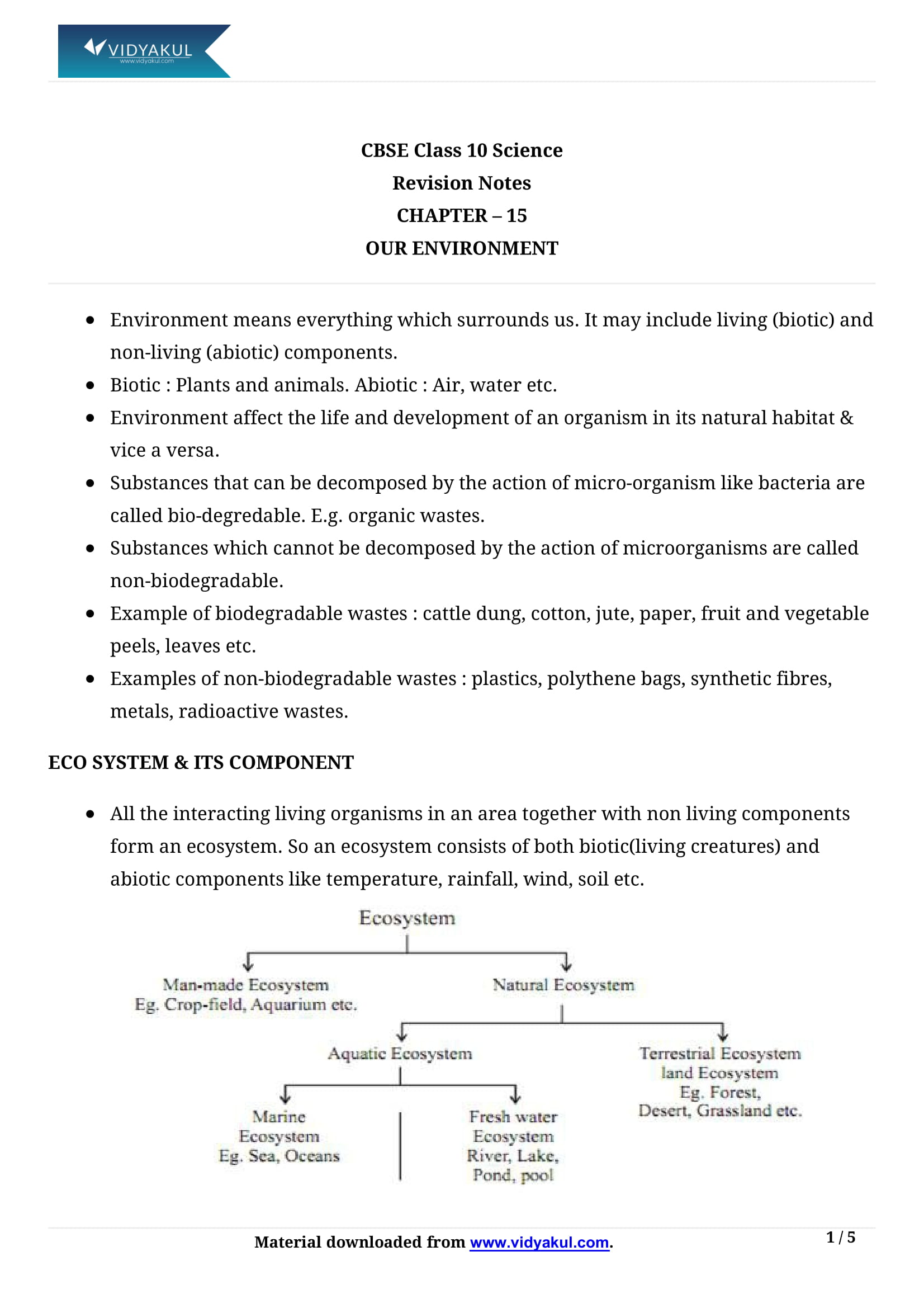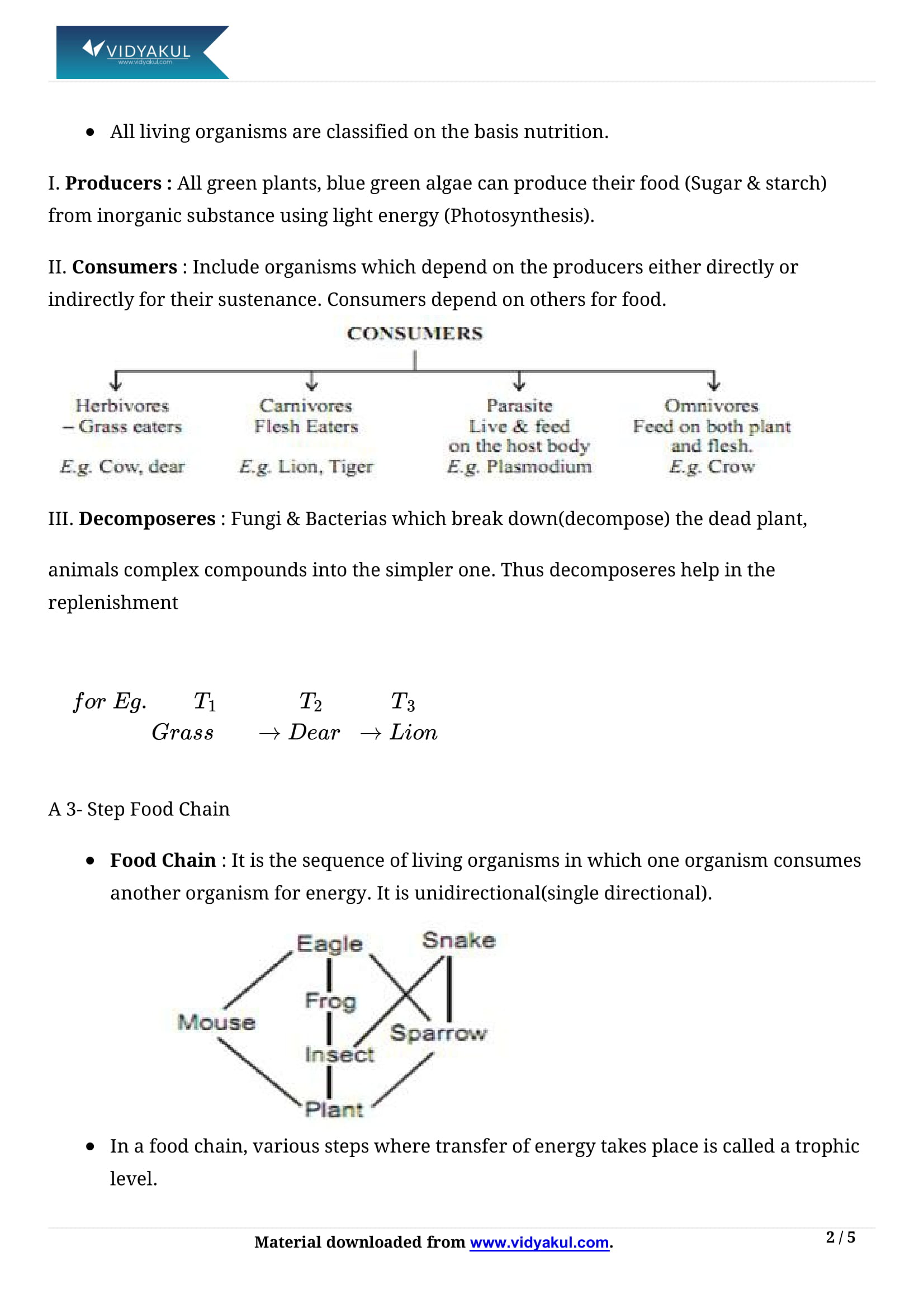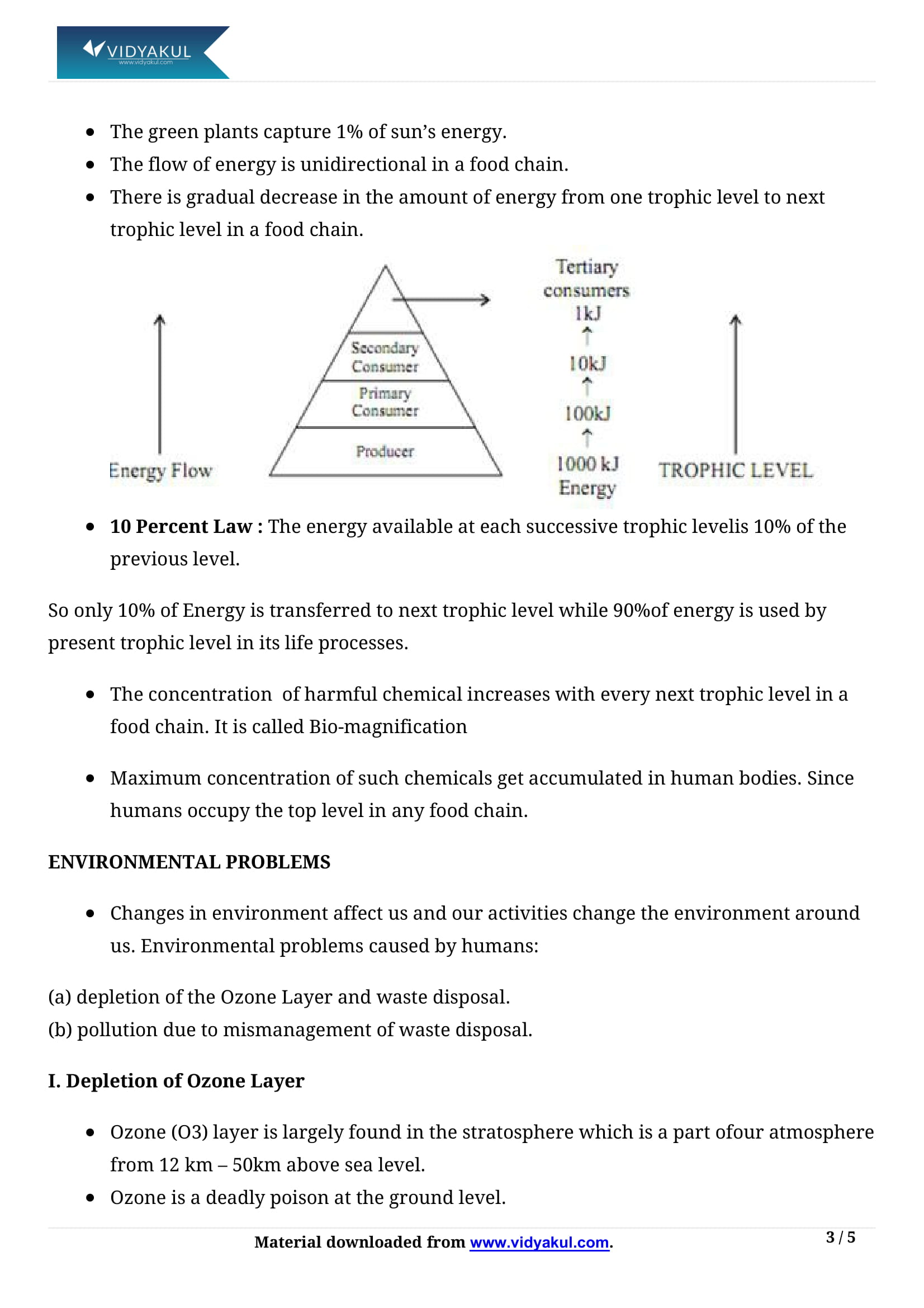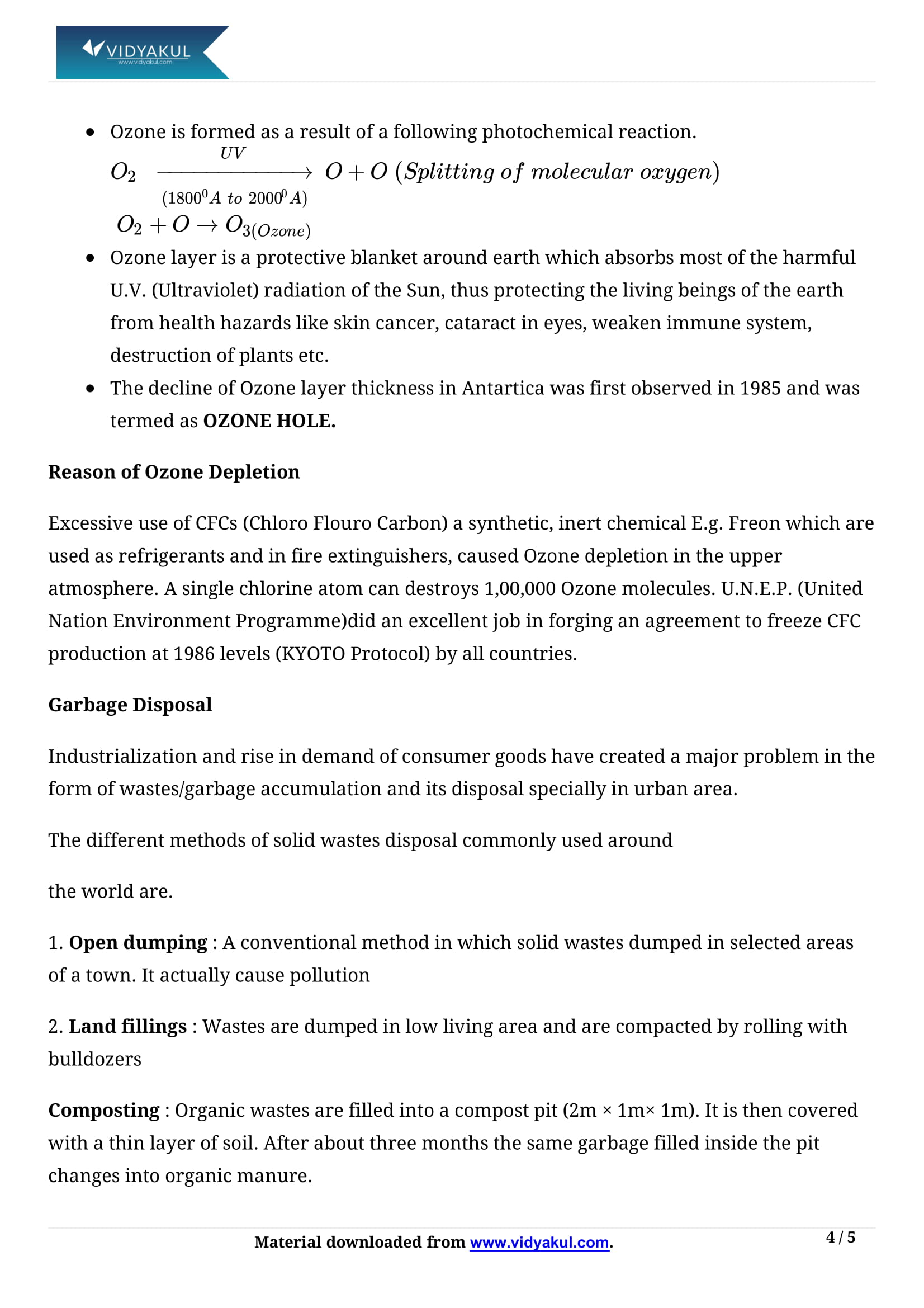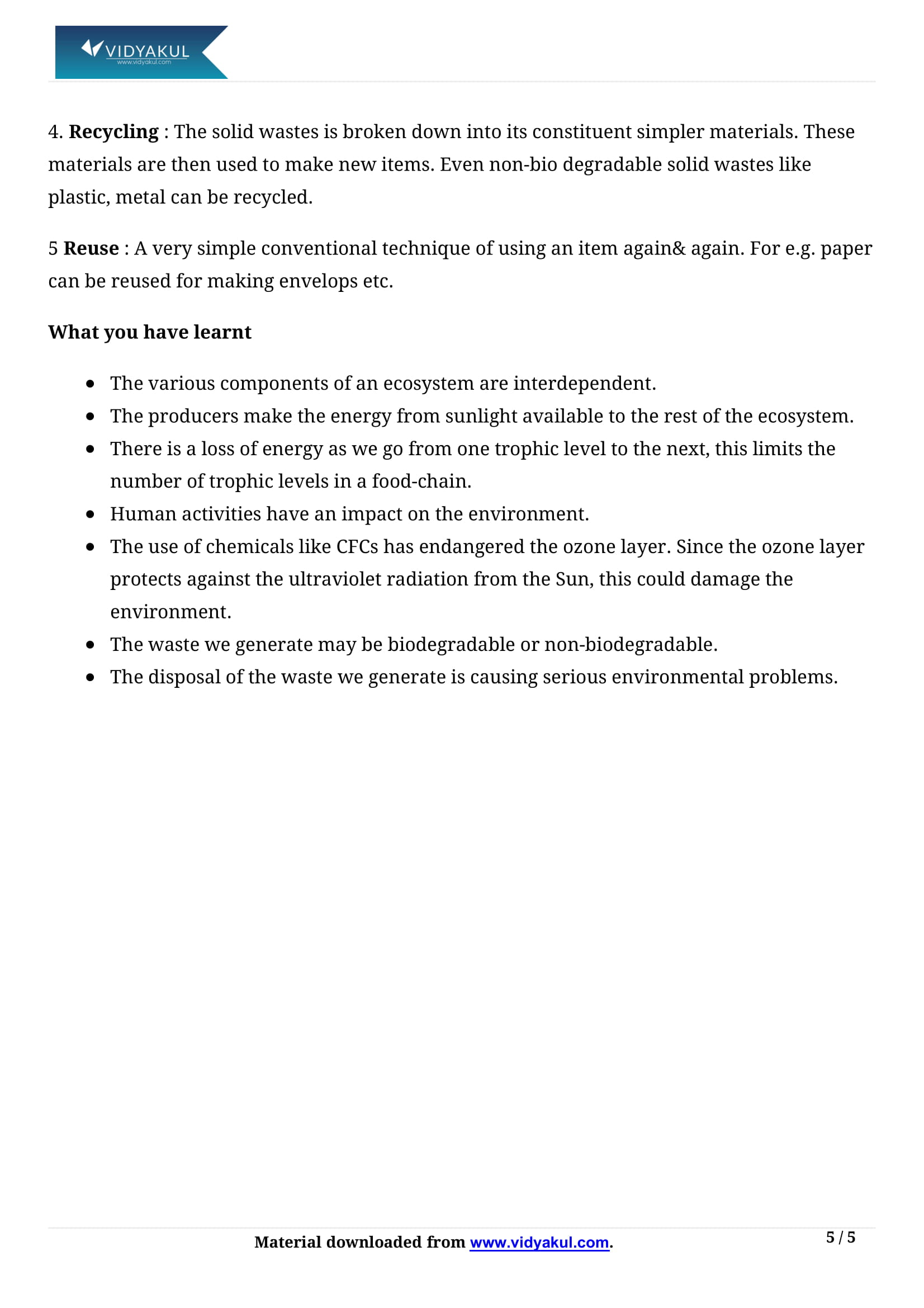Our Environment Class 10 Notes
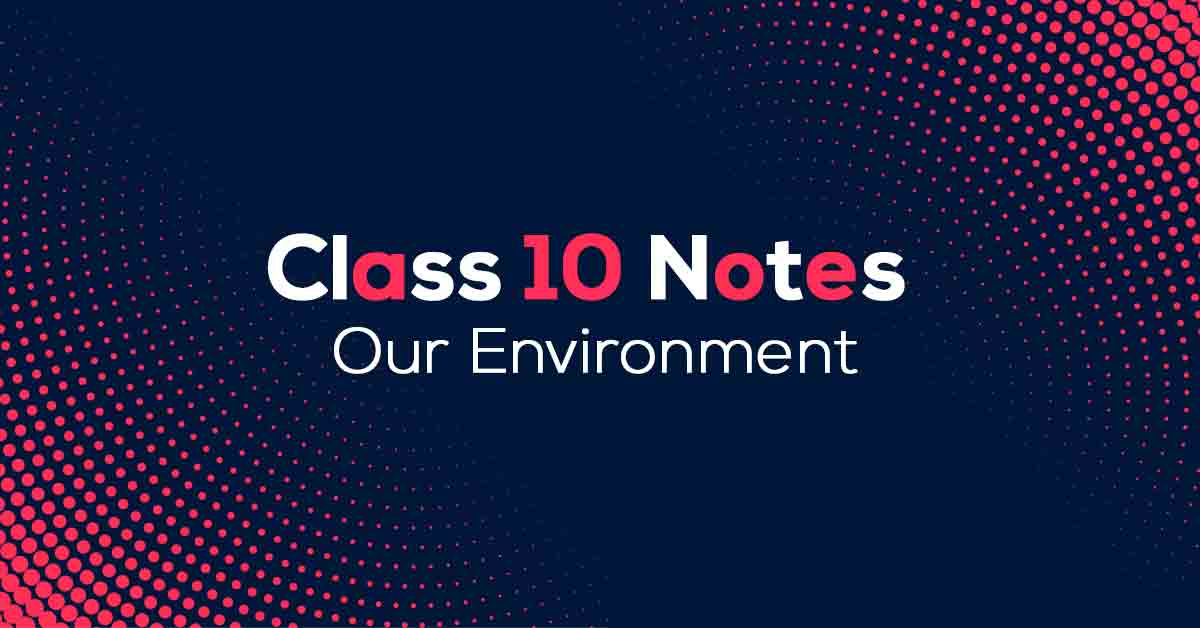
Chapter 15 Our Environment
Chapter 15 of the NCERT notes for Class 10 Science provides concise answers to questions about our environment. In this chapter, students will learn about ecosystems, food webs, etc. At the end of each chapter there are questions about the text. Students are encouraged to practice this so that they can answer topic-related questions for the final exam.
The Class 10 Science Chapter 15 NCERT Vidyakul's notes help students develop the right way to write their answers. There are two blocks where students learn about ecosystems and environmental issues. Students can practice these questions to clarify the chapter. All of these materials are provided free of charge.
Read more articles to learn more about NCERT notes for Classes 10.
CBSE CLASS 10th SCIENCE CH-15
Points to Remember
Below we have provided some of the important points for NCERT notes for Class 10 Science Chapter 15. As a result, students must refer to it to score more marks:
Substances that can be broken down by biological processes are called biodegradable and the substances that are not broken down in this manner are called non-biodegradable substances.
The organisms which consume the food produced, either directly from producers or indirectly by feeding on other consumers are the consumers. Consumers can be grouped as herbivores, carnivores, and omnivores.
The flow of energy is unidirectional.
Due to biological magnification wheat, rice, vegetables, fruits and even meats contain varying amounts of pesticide residue.
All the interacting organisms in an area together with the non-living constituents of the environment form an ecosystem.
Students can get more information about NCERT notes for Class 10 Science Chapter 15 from Vidyakul.
Topics and Sub-topics
Our environment is a very simple and effective field. Students should go through each paragraph or detail in the chapter. References to study materials and exercises can help students better understand the chapter. “Our environment” is an important and exciting chapter, so students are encouraged to explore all sections. This makes learning much easier and earns you more points.
Vidyakul offers students a variety of practical questions. It is recommended that all questions be addressed so that students can practice before exams. Additionally, Vidyakul can be used when students face obstacles or problems. Students can also refer to the Vidyakul examples to better understand the NCERT notes. Thus, students can start preparing for the exam. Students are expected to study each subtopic thoroughly in order to be able to prepare effectively for the exam.
Few Important Questions
What are the different types of landforms present in our environment?
Mountains, hills, plateaus and plains are the four major types of landforms which are majorly present in our environment.
What is ‘Lithosphere’?
The Lithosphere is the rocky outer part of the Earth. It is made up of the brittle crust and the top part of the upper mantle.
Where is the ‘Biosphere’ present?
The Biosphere makes up the portion of the Earth where life exists.
Substances that can be broken down by biological processes are called biodegradable and the substances that are not broken down in this manner are called non-biodegradable substances.
The organisms which consume the food produced, either directly from producers or indirectly by feeding on other consumers are the consumers. Consumers can be grouped as herbivores, carnivores, and omnivores.
The flow of energy is unidirectional.
Due to biological magnification wheat, rice, vegetables, fruits and even meats contain varying amounts of pesticide residue.
All the interacting organisms in an area together with the non-living constituents of the environment form an ecosystem.
What are the different types of landforms present in our environment?
What is ‘Lithosphere’?
Where is the ‘Biosphere’ present?
Learn more about in Our Environment Class 10 Notes pdf.
Download Latest Class 10 Sample Papers 2019 for Board Exams
- CBSE Class 10 Sample Papers 2019 PDF
- CBSE Class 10 Maths Sample Papers 2019 PDF
- CBSE Class 10 Science Sample Papers 2019 PDF
- CBSE Class 10 English Sample Papers 2019 PDF
- CBSE Class 10 Hindi Sample Paper 2019 PDF
- CBSE Class 10 Social Studies Sample Papers 2019 PDF
Download this solution for FREE Download this PDF
Download Vidyakul App for more videos, PDF's and Free video lectures.
